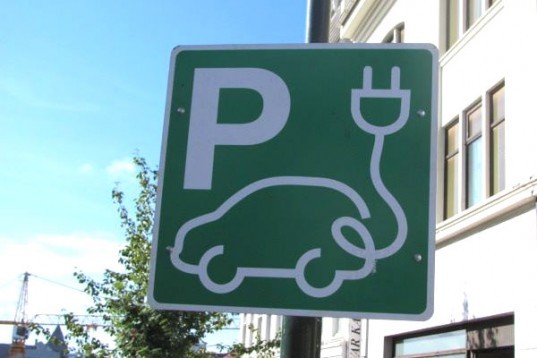Mark it down: the report this month about the shutdown of Vehicle Production Group – beneficiary of a $50-million stimulus loan from the Department of Energy – means the Advanced Technology Vehicles Manufacturing initiative within the Loan Program Office has been a thorough failure.
All five ATVM recipients, awarded a total of $8.4 billion of taxpayer-backed financing under the Recovery Act, have earned derision to some degree. Most fit into the already much-ridiculed electric vehicles program. VPG was funded to produce wheelchair-accessible passenger vehicles that ran on compressed natural gas.
The recipients range from the start-ups (Fisker Automotive, Tesla and VPG) to the established (Ford Motor Company and Nissan). The highest-profile flop, by far, has been Fisker, with its single $102,000-plus electric model built for wealthy California elites that couldn’t muster a stronger review from Consumer Reports than “the fourth-worst luxury sedan” on the market, among many other problems. The taxpayer beneficiary of $192 million now teeters on the edge of bankruptcy, and now non-electric VPG has blamed its own downfall on the Fisker fiasco fallout.
According to Business Insider Australia, VPG CEO John Walsh said fear caused by bad publicity and Congressional scrutiny of Fisker led DOE to impose greater restrictions on his company. The news site said VPG raised $400 million in private equity in addition to the DOE loan, and like other recipients was required to keep a certain level of cash in reserve. Walsh said when VPG dropped below that amount, DOE froze its assets, which forced it to stop operations and lay off its employees. Still, he insisted the business was healthy, with a few thousand vans sold and thousands more ordered from customers.
“I think the DOE has made a major error with this company because of the pressures of the Fisker situation, and that is unfortunate,” Walsh said. “It has everything to do with Fisker.”
So the electric vehicle businesses – and those that supply it, such as battery makers – were not the only ones who have struggled. They also caused collateral damage by virtue of the fact they shared the same tainted DOE loan program. At a House hearing last month, Republican members of the Oversight and Government Reform Committee slammed the judgment of ATVM loan officials who decided to finance Fisker.
“They had a triple C rating, they’re under collateralized, they can’t meet payroll, and now we’re surprised?” said Rep. Jim Jordan of Ohio. “All the evidence points to that they should never have gotten the loan in the first place.”
Ironically Walsh echoed much of the Congressmen’s sentiments, despite VPG’s own questionable qualifications for an ATVM loan.
“Fisker is an electric sports car,” he said. “Who needs an electric sports car, other than Justin Bieber?”
“There is a need for what we build,” he added, “and not a need for an electric sports car.”
Walsh’s point is understandable in relative terms, but the claim that there is a “need” for vans for handicapped people that run on CNG is also absurd. Yet a conjured-up “need” for vehicles that run on non-fossil fuels (although where do they think most electricity comes from?) was the Obama administration’s justification for aggressively developing the ATVM program through the stimulus.
Again, each loan recipient has either failed, or did not need taxpayer support, or both. And the established automakers (Ford and Nissan) that accepted the loans showed little evidence that they used the funds for its intended purpose. The others besides VPG:
1. Fisker Automotive. It’s been written to death. Besides the Consumer Reports review (which included the test car breaking down at CR’s facility), there have been fires, recalls, layoffs, frequent CEO changes, unethical behavior by its venture capital firm, an investor lawsuit, and suspected cronyism.
2. Tesla Motors. President/CEO Elon Musk Tweeted earlier this weekthe company would fully repay its $465 million loan from DOE, likely this week, which some in the media are trumpeting as an Obama “green win.” If the measurement for the administration’s success is that a company didn’t go belly-up like Solyndra, Abound Solar, A123 Systems, etc., then congratulations – here’s your trophy.
In reality, especially in light of the struggles experienced by Fisker and the bankrupt companies, it’s obvious that Tesla never needed the money in the first place. The wildly successful billionaire mogul Musk, with entrepreneurial roots in PayPal and as CEO of SpaceX, undoubtedly could have shifted some of his personal fortune around and easily taken care of the debt. But reports have said that Tesla sold more stock to raise capital – a reported $1 billion.
On the performance front, Tesla has avoided the many pitfalls that Fisker experienced. But it’s still too early to call the EV company and its costly Model S a success. The recent widely publicized announcement that the company was finally profitable was attributable to the fact that Tesla could take advantage of selling California emissions credits to other auto companies whose fleets don’t comply with the state’s stringent emissions standards.
Meanwhile Musk and friends, like everyone else in the industry, have not conquered the obstacles of expense, driving range and recharging times to a level where they are on par with gas-powered vehicles. The broader success of the EV industry also is dependent on the deployment of charging infrastructure and battery technology improvement, both of which are still heavily subsidized by taxpayers.
And the disastrous review of the Model S delivered by the New York Times‘s John Broder, in which he suffered much range anxiety and a towed-away car, set off a firestorm of exchanges in the media from which Musk is still trying to recover. All these factors mean the ultimate fate of Tesla is still undetermined, but even if Tesla thrives long-term, it won’t be because of the ATVM program.
3. Ford Motor Company. The automaker that has been proud to claim that it didn’t take bailout money like its fellow U.S.-based competitors, General Motors and Chrysler, instead accepted a $5.9 billion loan guarantee from the ATVM program. Ford and its partners at DOE claimed the financing made possible the conversion of “nearly 33,000 employees to green manufacturing jobs,” with an alleged 509,000 (presumably gas-powered) cars “off the road” and 2.38 million tons of carbon dioxide avoided. This miraculously occurred with Ford’s refurbishment of a few manufacturing plants.
The rollout of its first plug-in, the Focus Electric, was done so less-than-enthusiastically. Rather than a robust campaign to promote the new vehicle and its technology (like GM did with the Chevy Volt), instead Fordemployed the ho-hum approach.
“The marketing of the Focus Electric is to people who buy electric vehicles, not to you and me,” said Jim Farley, Ford head of global marketing, to USA Today a year ago. “We’re focused on the people who buy them.”
The Wall Street Journal reported in August that Ford is expanding its hybrid offerings to compete with the Toyota Prius and others, but how is it these other automakers can develop these vehicles without putting taxpayer resources at risk, yet Ford can’t?
So 33,000 employees were not added to employment, but suddenly converted to “green” workers, all to build cars that relatively few will buy.According to Bloomberg News, Ford owes $5.5 billion on the loan, is making quarterly payments of $148 million, and its payback terms extend through June 2022. More good news: Ford didn’t take bailout money and didn’t go bankrupt – another “win” for the Obama administration!
Nissan. CEO Carlos Ghosn said in October 2011 that he would manufacture the all-electric Leaf wherever governments put up subsidies and incentives, and so he joyfully raked in a $1.44 billion ATVM loan to refurbish a plant in Tennessee to build the EV and its batteries. The project’s promoters said the alterations would lead to 1,300 new jobs, enabling Nissan to produce up to 150,000 Leafs and 200,000 battery packs per year, which will lead to the all-important avoidance of 204,000 tons of carbon dioxide emissions annually. Last year Ghosn predicted sales of 1.5 million EVs by 2016, and said EVs will account for 10 percent of new car sales by 2020.
It’s not happening, and now Nissan has admitted as much.
“We were a little bit arrogant as a manufacturer when we went to the 50-state rollout,” said Al Castignetti, Nissan’s vice president for sales, to Automotive News in late November. “We had assumed that there were people just waiting for the vehicle who would raise their hand and say, ‘Give me a Leaf, give me a Leaf, give me a Leaf.'”
The expectations were diminished to such a degree that Nissan canceled the grand opening for the new plant that was scheduled for late November, despite much earlier fanfare and anticipation. And beyond the poor sales, the Leaf has also suffered complaints about battery power loss in hot climates and extremely limited range, which of course leads todriver anxiety.
The follies surrounding each of the ATVM recipients is reflected in areport published in March by the Government Accountability Office, which reviewed DOE’s loan programs for a briefing to both the House and Senate’s Appropriations subcommittees on Energy. Investigator Frank Rusco found the ATVM program was getting the cold shoulder from other electric vehicle entrepreneurs and major automakers. Of the $25 billion that was made available, DOE only issued $8.4 billion in guarantees to the above-mentioned five companies – the remainder has been mostly left unused.
“…the negative publicity makes DOE more risk-averse, or makes companies wary of being associated with government support,” Rusco wrote.
And besides the ATVM loan program, there are troubled vehicle and battery companies that received DOE grants from the stimulus, including bankrupt A123 Systems and Ener1, and troubled Smith Electric Vehicles and LG Chem.
Evaluations of the Obama administration’s electric transportation sector “investment” extend beyond whether companies simply go bankrupt or not. They need to be measured also against whether they are reaching goals that were sold to the public, whether the money is actually being used for its intended purpose, and indeed whether they are achieving the environmental milestones they set.
Remember, all these initiatives were supposed to save us from global warming, right? Since there has been no warming in the last 17 years, I guess that could be called a success.
[First published by the National Legal and Policy Center]





